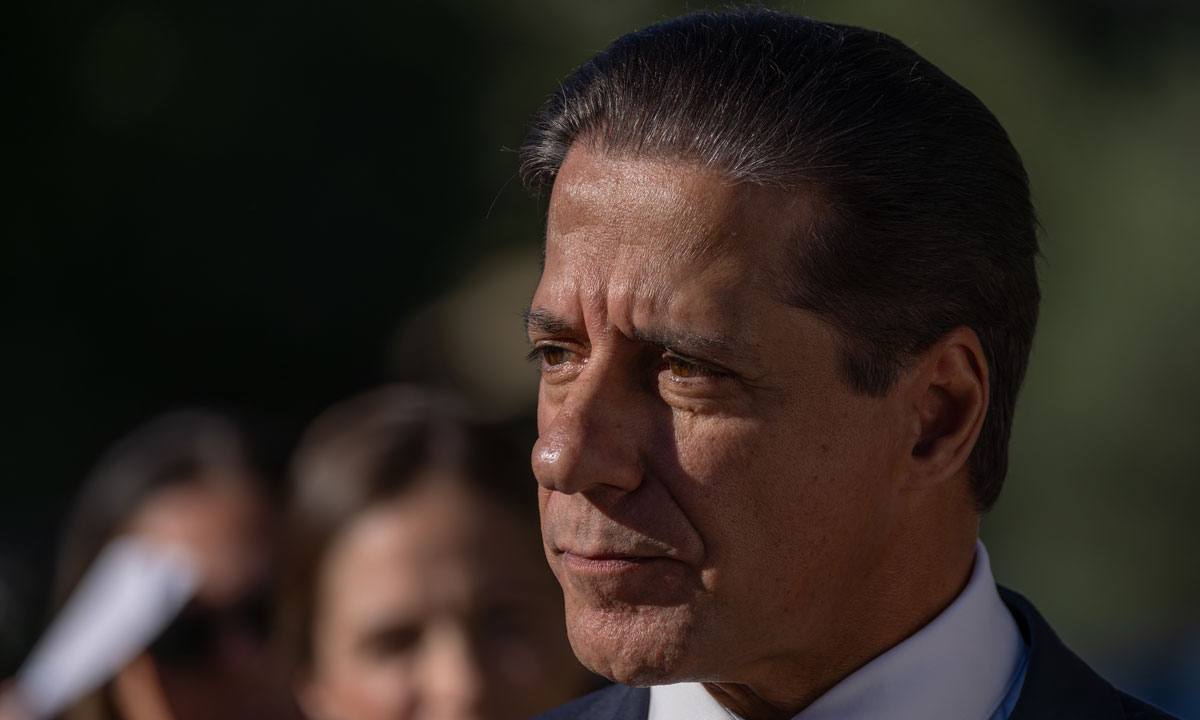LAUSD Struggling with Chronic Absenteeism Years After the Pandemic
LA school officials see no easy fixes for the long-term problem of chronic absenteeism, which impacts the city’s most vulnerable students.

Get stories like these delivered straight to your inbox. Sign up for The 74 Newsletter
A week before classes at Los Angeles Unified began earlier this month, attendance workers tasked with fighting chronic absenteeism fanned out across the city, visiting the homes of children to make sure they’d show up for the first day of instruction.
Knocking on the doors where kids had repeatedly missed school, the workers told parents of assistance the district could offer with transportation, school supplies, and even clothing.
The effort, a standard strategy for LAUSD at this point, was designed and implemented by the district after the pandemic, when the number of students deemed chronically absent reached nearly half of total enrollment.
Since then, the number of kids missing class has fallen, but it’s still nearly one-third of all students, so LA Unified has continued its push, said superintendent Alberto Carvalho.
“The first priority is having kids at school,” he said. “We need kids in school.”
Both for academic and financial reasons, as it turns out.
Rates of chronic absenteeism – defined by the district as missing ten percent or more of a school year – exploded in the pandemic, with nearly half of students missing that much class.
Prior to the pandemic, the fire had already started. In the two years before Covid, percent of students deemed chronically absent jumped from 13% to more than 18%. When school returned after shutdowns it rose to nearly half of all students.
The situation in LA wasn’t unique. But it threatened both academic and financial standing of the district, as well as endangering the lives of children who missed school. And causes for the persistent problem are complex, said Victor Flores, principal of John H. Liechty Middle School in Westlake.
“Sometimes it’s the parents that are working long hours, double jobs, and so it’s hard to get them to and from school,” said Flores. “Sometimes it’s chronic illnesses that some students may have. There may be mental illness or other issues in the family.”
Even though daily attendance in LAUSD is rising, rates of chronic absenteeism stood at nearly one-third of students at the end of the last academic year, nearly double pre-pandemic levels. Officials in Los Angeles, around the state and even the rest of the country don’t see a full recovery any time soon.
Here’s what’s to know about the sticky issue and how it affects LA Unified:
1. No easy fixes for a long-term problem impacting LA’s most vulnerable students
In L.A. Unified, just over 45% of students were chronically absent in 2021-22. The percentage dropped to 36.5% in 2022-23. The preliminary rate for the 2023-24 school shows improvement to 32.3%, but that’s still way above historic norms — and Carvalho said yearly, incremental gains will be how the district digs itself out.
“Some of the challenges faced by these families transcend that which the school system can address,” said Carvalho.
The students impacted by the problem are the city’s neediest, said Graciela Ortiz, field coordinator for pupil services and attendance. Data kept by the district show homeless kids, poor kids and students with disabilities are far more likely to be absent. Likewise for kindergartners and pre-kindergarteners entering the system, and high school kids.
“It’s our working-class families and low-income communities that are affected the most by attendance issues,” said Ortiz. “After the pandemic, it’s as if those barriers [that prevent kids from getting to class] were just exacerbated.”
2. Showing up for class makes nine times the difference when it comes to LAUSD academics
Research has long shown chronic absenteeism is bad for academics. And showing up for class is good. But LAUSD has now quantified just how important this is, Carhvalho said at a press conference given at Venice High School on the first day of class.
“For every one percent of daily attendance improvement, particularly for the most fragile students, we see a nine percent improvement in academic performance,” Carvalho said. The calculations were made with principals from 100 schools that are fighting the problem, he said.
3. Chronic absenteeism creates a financial problem in LA Unified, too
Unlike many other large states that look more aggressively at enrollment, California uses attendance as a weighty measure to make decisions about school funding, said Carvalho. For every 1% of improved attendance in the district, that’s an additional $60 million in state funding it would receive, he said. So students who don’t go to class regularly “actually deflate the total potential revenue for all students in the district,” he said.
Like other districts, Los Angeles is under financial pressure and is trying to avoid closing schools amid enrollment declines. Given those circumstances, Carvalho said, the money is more important than ever, even if the district managed to avoid layoffs this year.
4. LA Unified’s novel toolbox to fight absenteeism includes “concierge” bussing for kids who miss class
The complex causes of chronic absenteeism demand a complex response. So LAUSD is using an array of tools at the problem, including “concierge” transportation that’s “almost door-to-door,” Carvalho said. Transportation is one of the most challenging obstacles in getting kids to class, so the district is rerouting its bus lines to pick up students as close to their homes as possible. “We’re constantly rerouting,” said the superintendent.
Customized bus routes are just part of the package. The district is continuing with home visits, attendance counselors at each school, and provides wraparound social services meant to boost attendance, such counseling, medical care, or even laundry. Other novel approaches include trying to make school fun, for example, and principals taking the time to talk to parents individually at pickup and dropoff.
Get stories like these delivered straight to your inbox. Sign up for The 74 Newsletter

;)